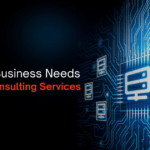Are you in charge of making important technological decisions and are you having trouble deciding which middleware is best for your bank? If so, this in-depth guidance is made just for you.
As someone responsible for steering your bank’s technological strategy, the middleware you choose must support your vision for innovation, efficiency, and growth. The right solution can be the backbone of your digital transformation, enabling your institution to deliver superior customer experiences, comply with regulatory requirements, and maintain a competitive edge.
In this article, we will delve into the essential factors that should guide your middleware selection, explore the various types of middleware technologies available, and explain why partnering with Simple Logic IT can be a game-changer for your bank.
Let’s begin our journey into the world of middleware technology!
The Strategic Importance of Middleware in Banking
Middleware: The Backbone of Modern Banking
In the rapidly evolving financial landscape, middleware serves as the cornerstone of a bank’s IT infrastructure. It’s the invisible layer that enables different applications and systems to communicate effectively, ensuring that operations run smoothly and securely. As a CTO or CIO, understanding the strategic importance of middleware is crucial for making informed decisions that align with your bank’s long-term goals.
Middleware’s role extends beyond mere integration. It acts as the central nervous system of your IT environment, orchestrating data flows, managing transactions, and enabling interoperability across diverse platforms. Whether it’s processing millions of transactions daily, ensuring real-time customer interactions, or complying with stringent regulatory requirements, middleware is the key to operational efficiency and innovation.
The Role of Middleware in Digital Transformation
Digital transformation is no longer a choice for banks; it’s a necessity. As customers demand more personalised and seamless digital experiences, banks must leverage advanced technologies to stay competitive. Middleware plays a pivotal role in this transformation by enabling the integration of new digital services with legacy systems.
For technology leaders, the challenge lies in selecting middleware that not only supports current digital initiatives but is also flexible enough to accommodate future technological advancements. Middleware that offers API management, microservices architecture, and cloud integration capabilities can empower your bank to innovate rapidly, respond to market changes, and deliver superior customer experiences.
Understanding Middleware Technology
What is Middleware?
Middleware is software that acts as an intermediary between different applications, systems, and databases, facilitating communication and data exchange. It’s the glue that binds various components of your IT environment, ensuring that they work together seamlessly.
Middleware is essential in complex IT landscapesAre you in charge of making important technological decisions and are you having trouble deciding which middleware is best for your bank? If so, this in-depth manual is made just for you where multiple applications need to interact in real-time. In banking, this could mean enabling communication between core banking systems, customer relationship management (CRM) platforms, payment gateways, and regulatory compliance tools.
How Middleware Works: A Technical Overview
From a technical perspective, middleware operates as an abstraction layer that handles the complexities of communication between different systems. It typically includes features like message routing, transaction management, data transformation, and security enforcement.
For example, in a bank, middleware can manage the flow of information between the front-end banking portal and the back-end core banking system. When a customer initiates a transaction, middleware ensures that the request is processed in real-time, authenticated, and recorded in the appropriate systems, all while maintaining data integrity and security.
Moreover, middleware supports the scalability of banking operations. As your customer base grows and transaction volumes increase, middleware can scale to accommodate the additional load, ensuring that your systems continue to perform optimally.

Types of Middleware Technologies
- Categorising Middleware Solutions
Middleware solutions come in various forms, each designed to address specific challenges in a bank’s IT environment. Understanding the different categories of middleware can help you select the right technology for your institution’s needs.
- Message-Oriented Middleware (MOM)
Message-Oriented Middleware (MOM) facilitates the exchange of messages between distributed systems. In a banking context, MOM is essential for enabling real-time communication between different applications, such as payment processing systems, fraud detection tools, and customer service platforms.
MOM supports asynchronous communication, meaning that messages can be sent and received at different times, without requiring both systems to be active simultaneously. This is particularly useful in banking, where high availability and reliability are critical.
- Transaction Processing Monitors (TPMs)
Transaction Processing Monitors (TPMs) are middleware solutions that manage and monitor the execution of transactions across multiple systems. TPMs ensure that transactions are processed reliably, consistently, and securely, making them indispensable in banking operations.
For example, a TPM can manage the processing of a customer’s loan application, ensuring that the transaction is executed correctly across the bank’s CRM, loan management system, and core banking platform. TPMs also provide features like rollback and recovery, which are essential for maintaining data integrity in case of system failures.
- Database Middleware
Database middleware connects different database management systems (DBMS), enabling seamless data exchange between them. In banking, where data is often stored in multiple databases, database middleware is crucial for ensuring that data is accessible and consistent across the organisation.
For example, a bank might use database middleware to integrate customer data from its CRM system with transaction data from its core banking platform. This integration allows the bank to gain a holistic view of each customer, enabling personalized service and targeted marketing.
- Application Servers
Application servers are middleware platforms that host and manage applications, providing the necessary runtime environment and middleware services to support banking operations. They act as the backbone of a bank’s IT infrastructure, hosting everything from online banking portals to internal business applications.
Application servers provide features like load balancing, security, and session management, ensuring that applications perform reliably and securely, even under heavy load. In a banking context, application servers are critical for delivering high-quality digital services to customers.
- Enterprise Service Bus (ESB)
An Enterprise Service Bus (ESB) is a middleware architecture that enables the integration of various applications and services within an organisation. ESBs provide a centralised platform for managing communication, data transformation, and service orchestration across the bank’s IT environment.
In banking, an ESB can facilitate the integration of legacy systems with new digital services, enabling a seamless flow of information across the organisation. ESBs also support the implementation of microservices architecture, which can enhance the agility and scalability of banking operations.
- API Management Platforms
API Management Platforms are middleware solutions that enable the creation, deployment, and management of APIs (Application Programming Interfaces). APIs are essential for enabling communication between different systems and applications, both within the bank and with external partners.
In banking, API management platforms are crucial for enabling open banking initiatives, where banks expose their APIs to third-party developers to create new financial services.
API management platforms provide features like security, rate limiting, and analytics, ensuring that APIs are secure, scalable, and efficient.
The Impact of Middleware on Banking Operations
Middleware is a critical enabler of efficient banking operations, providing the technological foundation that integrates various systems and applications within a bank’s IT environment. Its impact is profound, particularly in terms of process optimisation, cost reduction, and scalability.
Streamlining Processes and Reducing Operational Costs
Middleware serves as the integration layer that connects disparate systems, such as core banking platforms, customer relationship management (CRM) systems, payment gateways, and external services like credit scoring agencies. By enabling seamless data exchange and communication across these systems, middleware eliminates the need for manual intervention, reducing the risk of errors and improving process efficiency.
For instance, middleware can automate the flow of information between a bank’s front-end applications and back-end systems, ensuring that customer transactions are processed in real-time. This automation not only speeds up transaction processing but also reduces operational costs by minimising the need for manual data entry and reconciliation.
Moreover, middleware supports the implementation of business process management (BPM) tools, which allow banks to model, execute, monitor, and optimise their business processes. With middleware, these tools can access and manipulate data from various systems, enabling banks to streamline operations, reduce bottlenecks, and achieve greater operational efficiency.
Enhancing Service Delivery and Customer Engagement
Middleware plays a crucial role in enhancing service delivery and customer engagement through digital channels. It acts as the bridge between a bank’s digital front-end, such as mobile banking apps and online portals, and its core banking systems. By facilitating real-time data exchange, middleware ensures that customers have access to up-to-date information, such as account balances, transaction history, and loan statuses, across all channels.
Furthermore, middleware supports the integration of advanced technologies like artificial intelligence (AI) and machine learning (ML) into customer-facing applications. For example, AI-powered chatbots and virtual assistants can interact with customers in real-time, providing personalised service and support. Middleware enables these applications to access and process data from various systems, allowing them to deliver accurate and timely responses.
Middleware also facilitates the deployment of omnichannel strategies, where customers can seamlessly switch between different channels—such as mobile apps, websites, and in-branch services—without experiencing disruptions in service. This consistent and integrated experience enhances customer satisfaction and loyalty.
Ensuring Compliance with Regulatory Requirements
In the highly regulated banking industry, compliance with regulatory requirements is non-negotiable. Middleware plays a key role in ensuring that banks meet these requirements by providing the necessary tools for data management, security, and auditing.
Middleware solutions often come with built-in features for data encryption, authentication, and authorisation, ensuring that sensitive customer information is protected at all times. Additionally, middleware can enforce data governance policies, such as data masking and tokenization, to further enhance security and compliance.
Compliance reporting is another area where middleware proves invaluable. By aggregating data from various systems, middleware enables banks to generate accurate and timely reports for regulatory bodies. This capability is particularly important for meeting the requirements of regulations such as the General Data Protection Regulation (GDPR), the Payment Card Industry Data Security Standard (PCI DSS), and the Anti-Money Laundering (AML) directives.
Supporting Scalability and Operational Resilience
As banks grow and transaction volumes increase, the ability to scale IT infrastructure becomes crucial. Middleware provides the scalability needed to support this growth by enabling distributed architectures, such as microservices and service-oriented architecture (SOA).
With middleware, banks can deploy and manage microservices that handle specific tasks, such as payment processing or customer authentication, independently of one another. This modular approach allows banks to scale individual services as needed, without affecting the overall system’s performance.
Additionally, middleware enhances operational resilience by supporting high availability and disaster recovery solutions. Features like load balancing, clustering, and failover mechanisms ensure that banking systems remain operational even during peak loads or in the event of system failures.

Where Do Major Problems Arise When Choosing Middleware?
When selecting middleware for a bank, there are several challenges that can cause problems, affecting how well the systems operate. Some of the common issues include:
Difficulty Connecting with Older Systems:
Many banks still rely on older systems that are essential to their operations. Finding middleware that works smoothly with these older systems can be a challenge. If the connection isn’t seamless, it can lead to inefficiencies, slow processes, and data not being shared properly across the organisation.
Struggling to Handle Growth:
As a bank grows and gains more customers, the middleware needs to handle the increased load. If it’s not designed to scale up, it can slow down services, cause system outages, and result in poor customer experiences.
Security and Compliance Risks:
Banks are required to follow strict rules to protect customer information and meet legal requirements. If the middleware lacks strong security features like data encryption or proper compliance reporting, the bank could face legal issues or suffer from security breaches.
Getting Locked into One Provider:
Some middleware vendors use proprietary technology, which can lock the bank into using their services. This makes it difficult to switch to better solutions later and can limit the bank’s ability to adapt to new technologies or regulations.
Complex Installation and Maintenance:
Middleware can be complicated to set up and maintain. Without the right skills or knowledge, there may be delays, higher costs, and operational issues during and after installation.
Not Ready for Future Technology:
Technology is always advancing, and middleware that isn’t flexible enough to keep up with new developments—like artificial intelligence or cloud-based services—can hold the bank back. It’s important to choose middleware that can grow and adapt as technology changes.
Why Trust Simple Logic IT with Your Middleware Technology
Elevate Your Banking Operations with Simple Logic IT
At Simple Logic IT, we specialize in providing middleware solutions that are tailored to the unique needs of the banking industry. Our deep understanding of financial systems, combined with our expertise in middleware technology, enables us to deliver solutions that integrate seamlessly, enhance performance, and scale with your bank’s growth.
Our approach is customer-centric, focusing on understanding your specific requirements and delivering a middleware solution that fits perfectly. Whether you’re looking to enhance your existing infrastructure, migrate to the cloud, or implement new digital services, Simple Logic IT has the expertise and solutions to help you achieve your goals.
Expertise Tailored to the Financial Sector
With years of experience working with banks and financial institutions, Simple Logic IT has a proven track record of delivering reliable and secure middleware solutions. We understand the unique challenges of the financial sector, including regulatory compliance, security, and the need for high availability.
Our team of experts works closely with your IT department to design and implement middleware solutions that meet your specific needs. We provide end-to-end support, from initial consultation and planning to implementation, training, and ongoing maintenance.
Customized Middleware Solutions for Your Unique Needs
At Simple Logic IT, we recognize that no two banks are the same. That’s why we offer customized middleware solutions that are designed to meet your unique needs. Whether you need to integrate legacy systems with new digital services, enhance security and compliance, or scale your operations to accommodate growth, we have the expertise and solutions to help you succeed.
Our customised approach ensures that your middleware solution is perfectly aligned with your bank’s strategic goals and operational requirements. We work closely with your team to understand your challenges and design a solution that delivers maximum value.
Enhancing Security and Compliance with Simple Logic IT
Security and compliance are at the core of our middleware solutions. We understand the importance of protecting sensitive customer data and ensuring compliance with industry regulations. Our middleware solutions are designed with security in mind, offering robust encryption, authentication, and compliance features.
We also stay up-to-date with the latest regulatory changes, ensuring that our solutions continue to meet the evolving requirements of the financial industry. With Simple Logic IT, you can be confident that your middleware solution is secure, compliant, and future-proof.
Seamless Cloud Integration and Migration
As banks increasingly migrate to the cloud, having a middleware solution that supports seamless cloud integration is essential. Simple Logic IT provides middleware solutions that simplify cloud integration, enabling you to take advantage of the scalability, flexibility, and cost savings offered by cloud computing.
Our middleware solutions support hybrid and multi-cloud environments, allowing you to integrate your on-premises systems with cloud-based services and applications. Whether you’re migrating to the cloud or enhancing your existing cloud infrastructure, Simple Logic IT provides the expertise and solutions you need to ensure a smooth transition.
A Partnership Beyond Technology: Strategic Support and Guidance
At Simple Logic IT, we believe that our role goes beyond providing technology solutions. We see ourselves as your strategic partner, offering guidance and support to help you navigate the complexities of the banking industry and achieve your long-term goals.
We provide ongoing support and maintenance services, ensuring that your middleware solution continues to deliver value over time. Our team is always available to provide technical assistance, answer questions, and help you address any challenges that arise.
With Simple Logic IT as your partner, you can focus on what you do best—delivering exceptional financial services to your customers—while we take care of your middleware needs.
Case Studies: Middleware Success Stories in Banking
Case Study 1: Streamlining Operations with Enterprise Service Bus (ESB)
A leading regional bank was facing challenges with integrating its legacy systems with new digital services. The bank’s IT environment was complex, with multiple applications and platforms that needed to communicate seamlessly to ensure smooth operations.
Simple Logic IT implemented an Enterprise Service Bus (ESB) solution that provided a centralised platform for managing communication and data flow between the bank’s systems. The ESB enabled the bank to integrate its legacy systems with new digital services, including mobile banking, online payment processing, and customer relationship management (CRM).
The ESB solution streamlined the bank’s operations, reducing manual processes and improving the efficiency of its IT environment. The bank also benefited from increased scalability, allowing it to accommodate growing transaction volumes and user activity without compromising performance.
Case Study 2: Enhancing Security and Compliance with API Management
A large international bank needed to enhance the security and compliance of its API infrastructure to support its open banking initiatives. The bank was exposing its APIs to third-party developers, enabling them to create new financial services and applications.
Simple Logic IT implemented an API management platform that provided robust security features, including encryption, authentication, and rate limiting. The platform also offered analytics and monitoring capabilities, allowing the bank to track API usage and ensure compliance with regulatory requirements.
The API management solution enabled the bank to securely expose its APIs to third-party developers while maintaining control over its data and ensuring compliance with industry regulations. The bank also benefited from increased innovation, as third-party developers were able to create new services that enhanced the bank’s offerings.
Wrapping Up
Selecting the right middleware technology is a critical decision for any CTO, CIO, or technology leader in the banking industry. The right middleware solution can support your bank’s growth, enhance security and compliance, and enable digital transformation. By considering factors such as scalability, security, integration capabilities, and vendor support, you can make an informed decision that aligns with your bank’s strategic goals.
Simple Logic IT offers specialised middleware solutions that ensure scalability, enhance security, and integrate smoothly with your existing systems. Our expert support helps you stay compliant and competitive.
Frequently Asked Questions on Middleware Technology for Bank
- What are middleware services in banking?
Software that connects and enables communication between banking systems. - Why do banks need middleware services ?
To integrate different systems and improve operational efficiency. - How does middleware services improve banking?
By enabling real-time data exchange and enhancing customer experience. - Can middleware services help banks reduce costs?
Yes, by automating processes and reducing manual intervention. - Is middleware services essential for digital banking?
Yes, it supports seamless integration of digital services.




